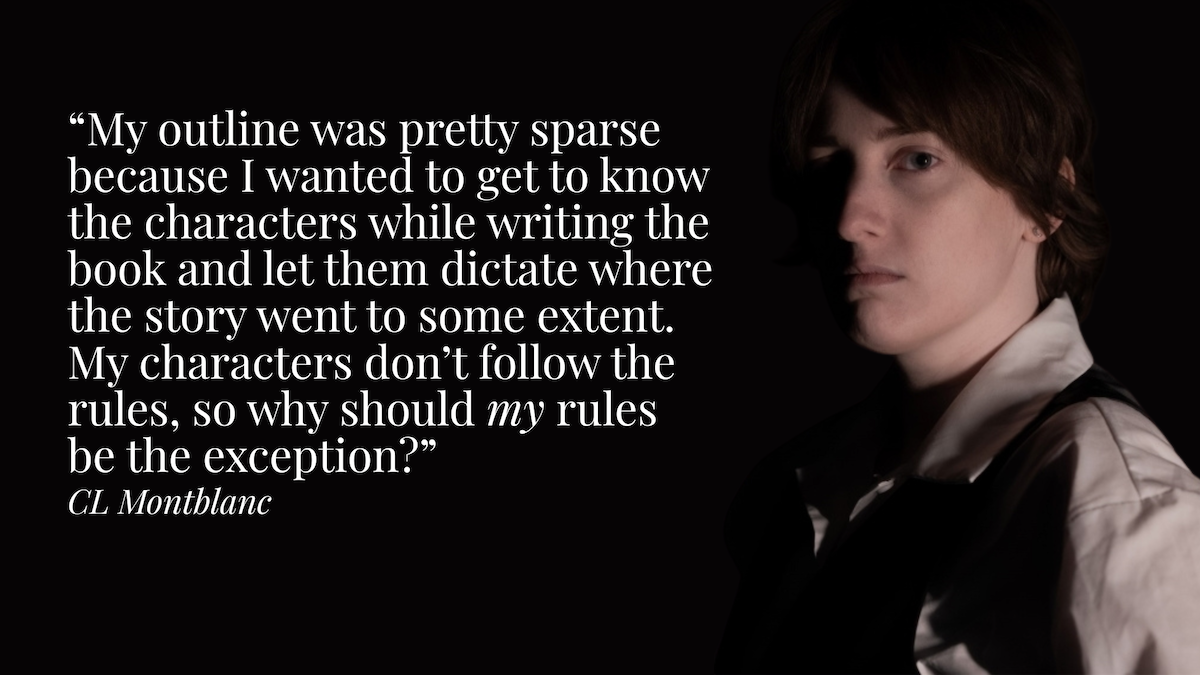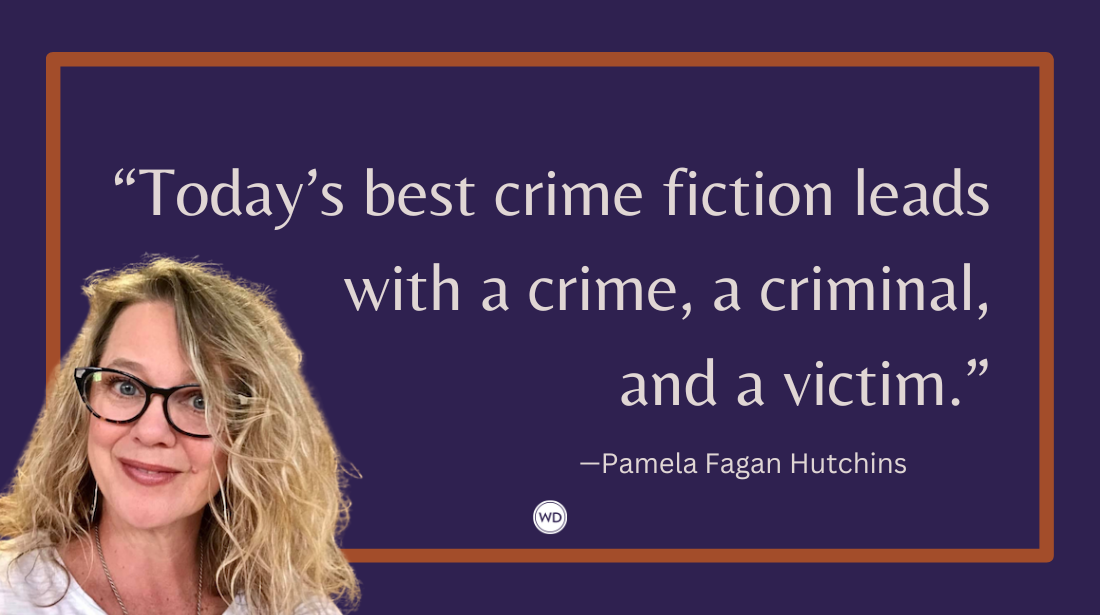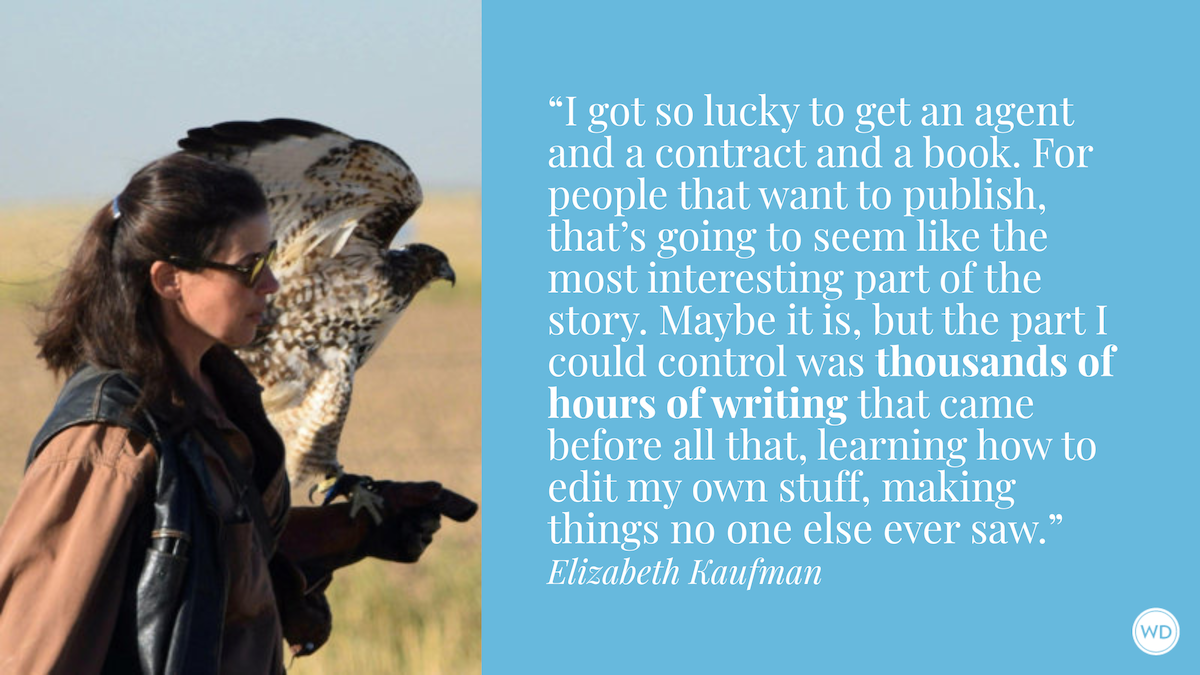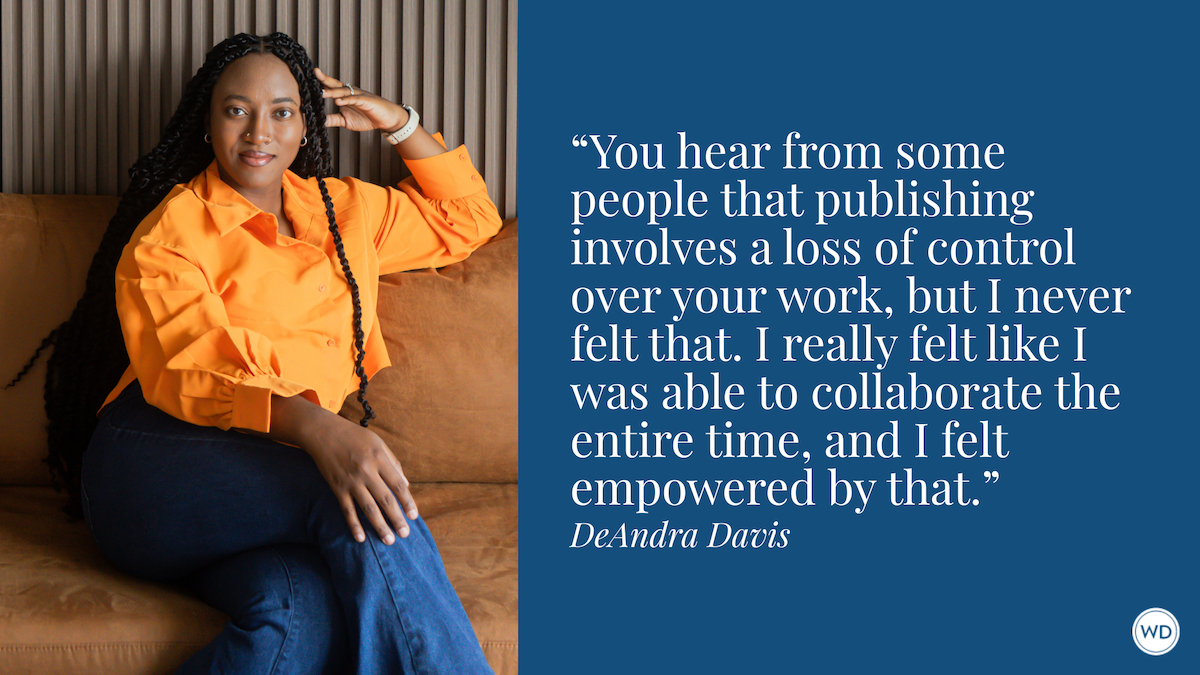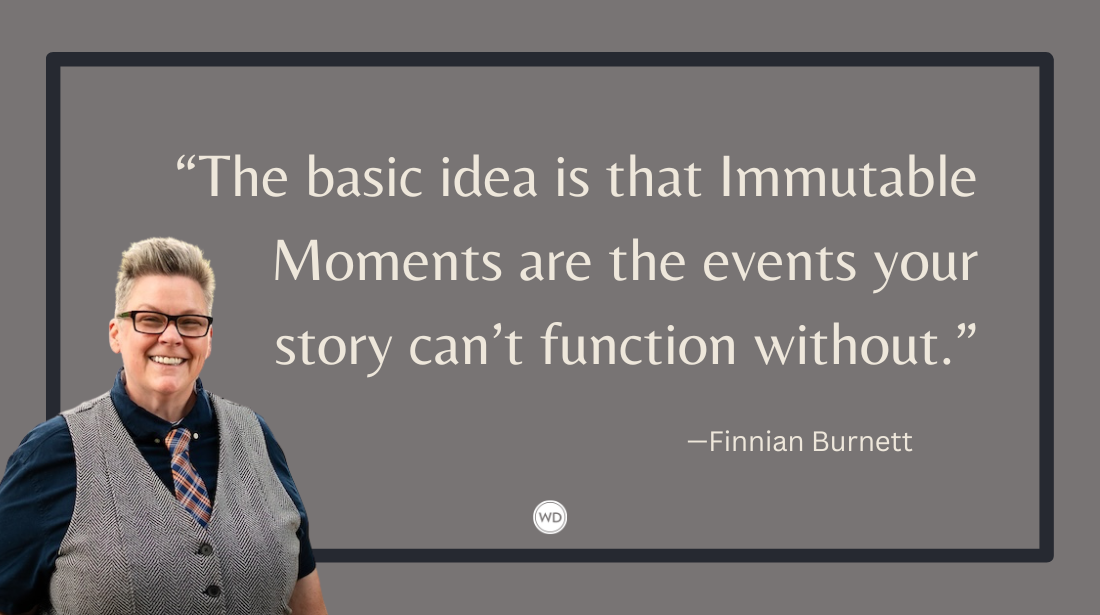5 Tools for Building Conflict in Your Novel
Just like anyone else who builds things from scratch, writers need tools. And the more you use them, the better you become at using them. The more tools you’re exposed…
Just like anyone else who builds things from scratch, writers need tools. And the more you use them, the better you become at using them. The more tools you’re exposed to, the greater your skill.
So herein are some tools for you in this matter of creating conflict. Use them to build a great-looking book with plenty of horsepower.
—by James Scott Bell
The Novel Journal
I picked up one of the best ongoing writing tools for conflict from Sue Grafton. It’s the novel journal. This is a document you keep, almost like a diary, jotting things in it every day before you begin to write.
“One of my theories about writing,” Grafton says, “is that the process involves an ongoing interchange between left brain and right. The journal provides a testing ground where the two can engage.”
Grafton begins by writing a few lines on what’s happening in her own life. Next she writes about any ideas that occurred to her in the dead of night.
Then she writes about where she is in her book. She talks about the scenes she’s working on, or trouble spots.
And that begins the “What If …” game. She writes down story possibilities and the pros and cons for these possibilities. Then she lets those ideas simmer for a day or two. When she checks back on them, she can determine which ones have stood the test of time.
This journal idea works for both OPs (Outline People) and NOPs (No Outline People).
For the NOPs, it’s pure gold because you’re tiptoeing through the tulips of your imagination. “Every day I fall in love again with my writing,” you say—right before an OP slaps your face.
You OPs, on the other hand, are practically military in your position. You scoff at the NOPs from your structurally sound edifice of steel girders and industrial wiring. The NOPs shake their heads, lamenting the beauty you might have created if you were in the tulips, too.
Strike back by using the novel journal to coax out deeper scene ideas, to discover surprises that you can work into your outline, and to find solutions to problems that inevitably arise in the writing of a novel.
The journal may be the item that enables NOPs and OPs to get along.
Here’s what a NOP journal entry might look like for a novel about a character named Roger Hill. Notice how I’m asking for more trouble—from the book, not life.
OK, Jim, you’re feeling pretty good today, aren’t you? Pretty chipper—you’d think you’ve got this thing nailed. But you don’t. You don’t think there’s enough trouble for Roger. You better come up with some things.
Fine. Don’t talk smack.
Hey, it’s your butt that’s got to be kicked. Look, Roger has just walked out of the bank and nobody has recognized him. What if you change that? What if he runs right into the worst possible person at this time? Maybe that cop from Chapter 1?
Or maybe his old friend from high school who wants to hold him up. Like that Ned character in Groundhog Day. This could be a little comedy but also tension because Roger has got to get out of there.
Good, good. What else could we do with this high school friend?
Maybe he’s got another assignment he’s keeping secret from Roger. Maybe this wasn’t a chance meeting at all.
Could said friend, we’ll call him Ned for now, be CIA? Or something of that nature?
Or would that be too predictable? Come on, Jim, you’re the writer here. Make it unpredictable.
Show Ned to be just as boring and incompetent as the guy in the movie. Make him seem like comedic relief, truly. And then maybe he dispatches an assassin with cool quickness in one shocking scene.
Or maybe Ned is married to an “ordinary” woman and SHE is the one with the skills.
Keep thinking, Jim. Turn this over to your subconscious—the boys in the basement—and sleep on it tonight.
Now, while the NOPs are falling in love with their journals, you OPs can be using it to give depth and surprises to your well-thought-out plans. Your entry might look something like this:
OK, Jim, you finished that scene yesterday with Roger about to leave the bank. Just like you pictured it. He’s got all that fear inside him now.
By the way, did you exploit that moment? Did you give enough description there of Roger’s insides? You better look at that, because here’s a real chance to deepen reader sympathy with ‘ole Rog. He’s got the plot thing going on pretty good now. Make the reader wait a little longer before he leaves the bank.
Now he’s going to meet Ned outside, and Ned is going to appear to be his old friend from high school. Of course, he’s a CIA-trained killer who is living what seems like a mild suburban life in Sherman Oaks, a total front.
What are you going to do to sell the surface story to the reader? You have Roger stepping out of the bank and Ned recognizing him.
What if you change that? Have Roger be the one to recognize him and make the first move? Have that be Ned’s plan all along, to avoid suspicion. Also it will help convince the readers that this is a chance meeting with Ned, not something Ned has set up.
Man, you’re good. Have I told you that lately?
Yes, a little pep talk never hurts.
So there you go. The novel journal. A tool that helps you to keep your mind in the book, no matter how you approach the material. Put it to use to make sure your conflict is as strong as it can be, every step of the way. You’ll find it also stimulates your thinking when you’re not writing. Ideas will start popping like cameras at a red carpet.
Questions to Be Answered
Keep a running list of questions to be answered. This is, primarily, for research purposes.
Writers differ in their approach to research. Some believe that research done up front reveals areas of conflict you’d never have come up with on your own. Others like to write the story and, as areas that require more research pop up, save them for later.
Like the NOP and OP approaches, each has its strengths. If you like research, by all means start there. But don’t do so much that you never get around to writing. If you like to wing it, put a symbol in your text where you are going to need research and keep writing. Make your best guess about what should go there and move on.
When in doubt, make it up and make it seem real.
You write fiction, after all. You’re a liar by trade.
If it’s a fact you must ultimately get right, keep writing and come back to it later.
When you have the chance to interview an expert, go beyond the standard-issue questions. Ask things like:
• What makes your job hard?
• What conflicts do you face in the day to day?
• What “war stories” can you tell me?
• What kinds of people complicate your work?
Look for the friction points of a profession, not just the duties. The friction is where you’ll find fodder for conflict.
Dreams
Dreams in fiction are often misused.
One way they are misused is when they open a novel. The writer thinks, Wow, I can write this really gripping opening, with all sorts of big-stakes conflict right off the bat! The readers will be totally sucked in and then I’ll spring it on them—it’s just a dream—but by that time they’ll be hooked. Man, what a great idea.
No. It’s not.
It’s a rip-off, a scandal, a con.
Do not open with a dream. (Yes, I know you can point to an author or two who has done this and sold a gazillion copies. And when you sell a gazillion copies, guess what? You can do it too! And I know Daphne du Maurier did it in Rebecca, but that was first-person narration, and she told us it was a dream and related it to us in past tense, so we’ll let Daphne get away with it, OK?)
Watch out also for the recurring premonition dream. This is where the character has a mysterious dream that keeps repeating and holds obvious significance the character can’t figure out but is afraid of. As the dream repeats, we know that at some future moment all will
be revealed.
It seems like a way to keep the reader’s attention, but it’s a bit like having the narrator (you) write, Little did she know that danger lurked just up the road. Yes, it gets the point across, but will the readers respect you in the morning? One reason they might not is that this type of dream has been used so many times in thrillers and speculative fiction. I’m not going to say you should never do it, but think twice before you do.
Almost as overused is the past psychological mask dream. This is where the character keeps having a dream about a traumatic experience in the past. All the symbolism is explained at some point in the proceedings. Hitchcock did this well in The Paradine Case, in 1947. But it was starting to show its age in Marnie (1964). Yes, you can do the same, but once again I’d consider alternatives.
The best way to use a dream is sparingly (once per novel as a general rule) and then only to give a window into what the character is experiencing, emotionally, at the moment. It is a method to get us inside the character and show us just how the conflict is getting to her.
In the dream Sarah saw the figure in the distance, behind her, coming closer. It was dark, she could not see his face, but she knew who it was just the same.
It was him, and he wanted her.
She tried to run.
The sidewalk below her feet became hot tar. She tried to move but her feet wouldn’t go.
She tried to scream but no sound issued.
Then the buildings, the tall glass buildings where
her friends worked, began to melt like ice. The water gathered around her and came up to her knees, then
her thighs.
The man was still there, walking on the water.
Dreams can be part of your toolbox but should be among those specialized gadgets that don’t come out very often.
Ongoing Mystery
The ongoing mystery is a technique of suspense. It is the unanswered question that everyone is thinking about, everyone is concerned with. The opening line of Ayn Rand’s Atlas Shrugged is: “Who is John Galt?” That question haunts the characters in the book for quite some time (and I do mean quite some time in a book of that size). It keeps us going.
Indeed, whole dramas can be built on the ongoing mystery. What else keeps us watching Waiting for Godot?
Can you work a mystery into your book that keeps the readers guessing for many pages to come? It’s not that difficult to do and can pay big dividends in readability.
In Rebecca, the ongoing mystery is Rebecca herself, the dead wife of Maxim de Winter, whom the book’s unnamed narrator has married. What is Rebecca’s hold on this man? What is her hold on the imperious Mrs. Danvers? Was she so perfect that Maxim can never truly love another?
The new bride fights her way through all these doubts and expectations and youthful mistakes, until finally the mystery is resolved in a most shocking way. But until that point, the mystery has a hold on the narrator—and, thus, the readers.
Try working a background secret of some kind into your story with the end goal of heightening your conflict. The secret can be something in the lead character’s life or in the life of another. But the secret has to be asserting itself in some fashion, unexplained but very real.
Guy With a Gun
This was a Raymond Chandler idea. If you’re writing along and the going gets dull, he said, just bring in a guy with a gun.
Justify it later.
It’s a great trick. (Yes, it’s OK to call these things “tricks of the trade.” If you’re angling for a position on the Yale faculty, you can call them “advanced literary operandi.”) It brings instant conflict, and juices up your story.
Of course, it doesn’t have to be a literal gun. It can be almost anything:
• An unexpected guest
• Someone from the past
• An upsetting phone call
• An accident
• A cop
• A nun
• A con artist
• A news item
• A death
• A sudden shock (“You’re fired!” or “Will you marry me?”)
And so on. It’s up to you, as always.
Try stuff. See what happens.
Let the justification come later.
Just continue to think trouble, trouble, trouble. Make it worse. Turn up the heat.
That’s conflict, your best friend as a writer.
Thanks for visiting The Writer's Dig blog. For more great writing advice, click here.
*********************************************************************************************************************************
Follow me on Twitter: @BrianKlems
Check out my humor book, Oh Boy, You're Having a Girl.
Sign up for my free weekly eNewsletter: WD Newsletter
James Scott Bell is the #1 bestselling author of Plot & Structure, and award-winning thrillers like Final Witness. He served as fiction columnist for Writer’s Digest magazine, to which he frequently contributes, and has written three additional craft books for Writer’s Digest Books including Revision & Self-Editing, The Art of War for Writers and Conflict & Suspense. Follow him on Twitter @jamesscottbell.



